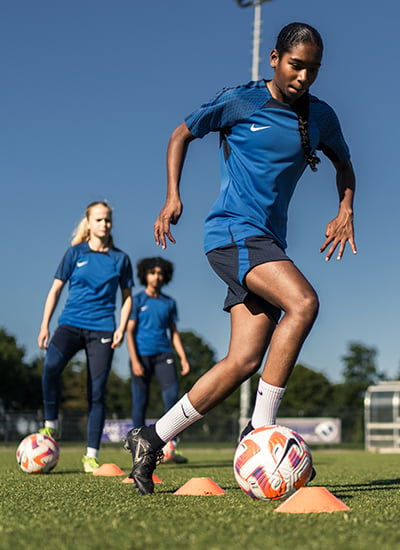With so many items going into your cricket kit, packing your bags becomes a real hassle. We’ve put together this guide on how to pack the essentials.
How To Pack Your Cricket Bag
Stop us if you’ve heard this one before:
It’s the end of a cricket game. You’re tired, and just want to get home and decompress from the game you’ve just had, for better or for worse.
So, not thinking about it, you blindly shove as much into your kit bag as possible, and carry the rest back to your car or home. And maybe it’s the end of the season, so you kind of forget about sorting out your bag once you get home, and shove it in storage.
I mean, you’ll have time to clean it out later, right?
Only, we forget about it, and we open our cricket bag 3 or 4 months later, only to find that it’s not just a mess, but it stinks too.
It’s a pain that we’ve probably all dealt with at some point, and one that is easily fixed by doing 2 things.
- NOT leaving your kit in your bag to just grow mould between games.
And, maybe more importantly:
- NOT just ramming your entire kit into your cricket bag!
We’ve already covered a pretty handy guide for cleaning and maintaining your cricket kit here. Now, we’re going to cover the other point, and show you how to pack your cricket kit!
Cricket Bag
First, we want to start this guide with a rundown of the sorts of cricket bags you can find there.
We’ve covered this in a lot more detail in our cricket bag guide here, but for now, there are two main choices that you’ll find:
- Wheelie Kit Bags
- Duffle Kit Bags
Wheelie bags tend to be a lot bigger and easier to move over large distances. The only problem is that they don’t handle uneven terrain or stairs well. Duffle bags meanwhile can be slung over your shoulder with no trouble, at the cost of that extra storage space.
Regardless of whatever type you choose, make sure that your bag of choice has plenty of compartments, whether they’re zipped up, separated by bag dividers, and so on. This will help you keep track of where your equipment should go.
The Core Kit
Now that you’ve got your bag, you need to figure out what your core equipment will be. These are the items that you need to have for every game, with no exceptions.
What kit you decide on being ‘core kit’ will be different for every player. However, every core kit set will include the following:
- Cricket Bat
- Cricket Whites (shirt/trousers)
- Batting Pads
- Cricket Gloves
- Cricket Ball
- Helmet
Cricket Bat
The bat is essential for every cricket player, so of course it needs to be able to fit in your cricket bag. Luckily for us, most cricket bags will have a large enough compartment to store your bat. Since cricket bats can be more than 38 inches (0.97 metres) long, and 4.25 inches (about 11 cm) wide, it’s a simple case of finding a duffle or wheelie bag that can fit those specs.
Alternatively, you can find bags that have side pockets that are tailor-made to store your cricket bats on the outside, keeping the interior of your bag free for the rest of your kit. Small wonder why these cricket bags are becoming more popular!
Protective Pads
Alongside your cricket bat, you’ll also need to pack the essential padding/protection that every cricketer should have. Outside the cricket bat, the batting pads are probably the largest item that you’ll need to fit in your bag. The biggest size for men’s cricket pads can be over 48 centimetres long.
Fortunately, the cotton fabric and foam filling can easily fit into most bags. Just make sure that they aren’t packed too tightly, or the foam padding will lose some of its ability to protect you on the pitch.
And, of course, don’t forget your cricket gloves! These little items should be easy to store alongside your batting pads, and won’t take up much room (especially if they’ve been broken in.
Cricket Ball
A cricket ball is technically an essential piece of kit. I mean, you can’t exactly play a cricket match without one, can you?
It’s generally always best to carry an extra cricket ball on you, whether you’re a newcomer player/upfielder, or a captain. Cricket balls can be petty easy to store in a side compartment, or wherever there is space for them.
Helmet
The same is also true for cricket helmets. These pieces of equipment are great extras to have handy if you’re a fielder, but they are essential for wicketkeepers, batters, and bowlers.
However, these things are also a pain to pack! Helmets will be some of the trickiest items to get into your bag, by a wide margin! We recommend removing the face mesh when possible, but this requires a screwdriver for the screws that hold it in place.
It's probably why most players opt to carry their helmets by hand.
Extras
So, we’ve covered the essentials. From here on out, this is pretty much purely for accessories. And what cricket player doesn’t love a few good accessories?
If you still have space in your cricket kit, you can now decide on what other extras you want to have on you when getting ready for a match
- Other Protective Pads (Thighs/cup/chest, etc.)
- First Aid Kit
- Shoes
- Sunglasses
Extra Cricket Pads
While batting pads might be the biggest item, they’re not the only ones. Thigh pads, groin cups, arm guards, and chest guards, are all extra pieces of protection that any cricket player can use.
Chest and thigh guards are generally the largest and bulkiest items besides batting pads, and can be easily folded up and stored alongside
Generally speaking, having these extras will largely depend on your preferences. Batters and wicketkeepers will probably want to keep some extra padding in their kit, seeing as they’re in the line of fire (or bowling, rather).
If there was one item that we’d recommend all players have from these extras, it’s the groin cup guard. Young or old, guy or girl, a misplaced fastball to the gonads is something you want to avoid!
First Aid Kit
While most official cricket matches will have someone in charge of first aid or accident response, there are plenty of players who are also certified by local authorities to administer first aid support.
Those players may also find that it’s helpful to include first aid items in their kit bag.
- Carrying wound dressings, bandages, and tape is always a good option, as these can be easily stored in a separate compartment of your kit bag.
- First Aid pins can help hold bandages and slings in place. Plus, they’re easy enough to store, thanks to their small size.
- First Aid scissors are quite bulky, but are necessary for properly cutting and sizing bandages you’re applying.
- Glucose chews are great for making sure an injured person stays conscious as they’re being treated. A strip of these chews can easily slide into a side compartment.
- Larger items, such as face shields, foil blankets, and ice packs, may be too cumbersome to carry alongside your other gear.
Cricket Shoes
Now, cricket shoes are a weird item to have in this section. Because, technically, cricket shoes are an essential piece of kit, especially if you’re playing on grassy turf. However, if you find that you’re playing on artificial turf, all you need are some decent grippy shoes, rather than specifically cricket shoes.
As to where to fit them, many cricket bags will include compartments at the bottom or one side that are made for shoes. Alternatively, if you want to keep your shoes and other gear separate, a simple shoe bag will also do the trick.
Plus, they’re shoes. Failing all else, they can just be worn on your person on the day!
Sunglasses
Let’s face it: If you’re going to be spending several hours at a time, the glare of the sun is going to be an issue. Especially during summer, or in sunnier locales. So, having sunglasses packed into your kit is a pretty smart idea.
Most sunglasses and their cases can easily fit into any free space in a cricket kit, but we recommend keeping them packed in a smaller compartment for tighter packing.
Final Notes
As you can see, there is plenty to consider when packing a cricket kit bag. It’s no picnic work, that’s for sure!
The extras that you’ll want to pack will probably be determined by your role on the cricket team. If you’re someone who has been first aid certified on your team, the first aid extras will be something that you need to consider.
And, of course, make sure that you give your padding plenty of time to air and dry out before storing your kit. It’s the easiest way to stop stenches and mould building up in them!
So, what do you think? Was this helpful? Were there any details that we missed? Let us know!
Related guides
Best adidas Football Kits by Colour
Summer 2020 Match Kit Guide: adidas








